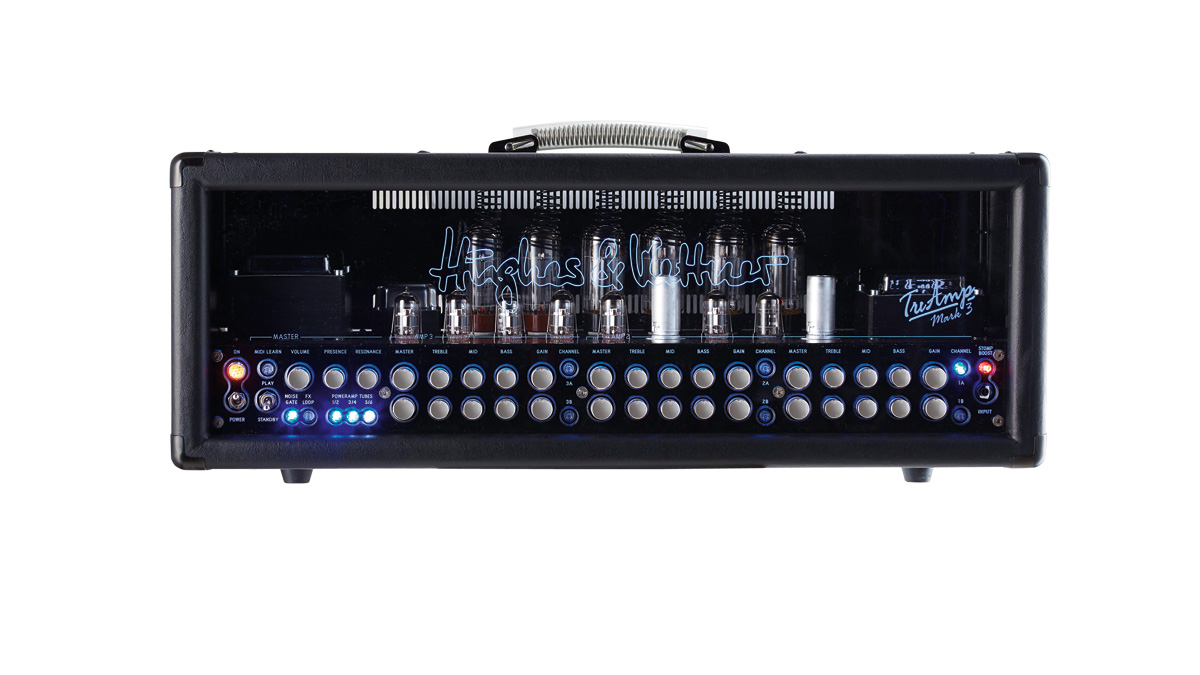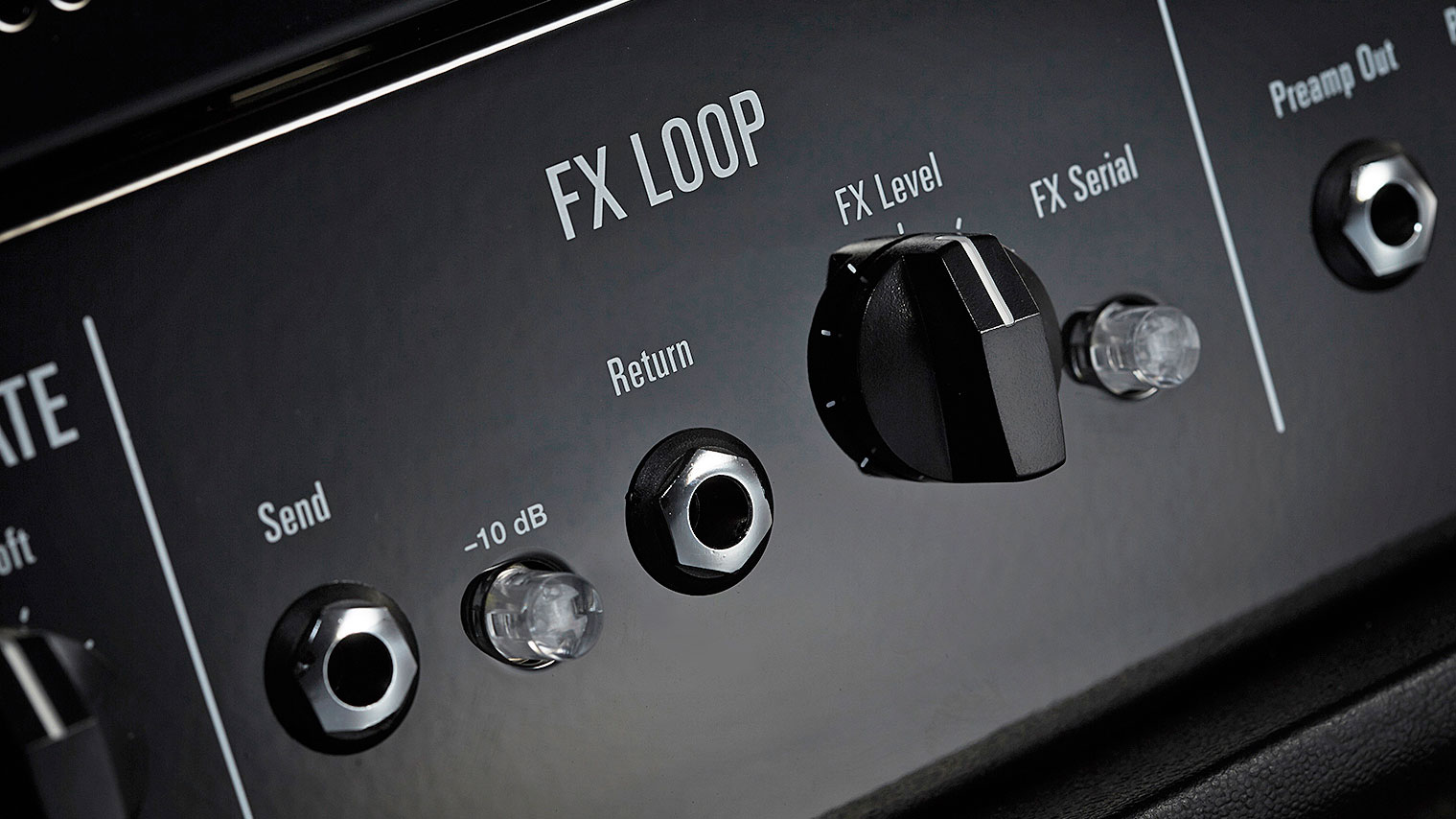MusicRadar Verdict
Beyond any doubt, Hughes & Kettner has raised the bar again.
Pros
- +
Possibly the ultimate multi- function head; enough features to keep any tweaker happy for years.
Cons
- -
Although it's expensive and pro-aimed, not all channels have the same depth of character.
MusicRadar's got your back

Hughes & Kettner TriAmp Mark 3

Hughes & Kettner TriAmp Mark 3
Hughes & Kettner is one of just a few manufacturers with a catalogue that includes every type of guitar amplification, from affordable solid-state to boutique all-valve products such as the Puretone, to state-of-the-art hybrid designs like the GrandMeister.
At the top of the German amp builder's product tree, however, is a head that's challenged the best of the world for 20 years.
The almighty TriAmp is Hughes & Kettner's go-to flagship, intended to be all things to all players, with just about every function a professional might need anda few more besides. H&K unveiled the TriAmp's all-new Mark 3 incarnation at the start of 2015, to the sound of jaws dropping as players and music journos alike digested the number of knobs on the control panel.
It's no surprise, then, that the Mark 3's front panel is a little intimidating at first glance, with no less than 33 rotary controls and 13 illuminated switches, not counting mains and standby. If that wasn't enough, there's even more functionality on the rear. The big, full-width chassis is immaculately finished and presented; the trademark backlit blue Perspex front is a feature one either loves or hates, something H&K appears to have taken onboard, as there's not just an on/off switch for the lights on the rear, but also a fader control.
Inside the heavy-duty steel chassis, practically all the electronics are PCB- mounted on very high-quality boards, with typically economical routing and high- quality components, such as metal film resistors to keep hiss down to a minimum. The overall build and design is typical of H&K's high-end German-made products - manufactured to withstand endless pro- level touring and provide the best sound quality possible, night after night.
Some amps can be used almost intuitively, often without reading a user manual, while others need at least one cover-to-cover session before plugging in. You might be surprised to find out that, for us, the TriAmp more or less falls into the former category. There are six preamp channels organised in three pairs, powered by eight 12AX7s.
"The overall build and design is typical of H&K's high-end German-made products - manufactured to withstand endless pro- level touring and provide the best sound quality possible, night after night."
All six channels are individually voiced, going from huge clean sounds with pedal-friendly high headroom, to similarly massive overdrives with practically infinite sustain. Each channel has an identical set of bass, mid and treble controls with gain and master volume. The TriAmp has three global master controls for volume, presence and resonance to fine-tune the power stage's high and low frequency response.
Want all the hottest music and gear news, reviews, deals, features and more, direct to your inbox? Sign up here.
The Mark 3's output stage has increased from four to six valves - four 6L6s and two EL34s, for a maximum output of around 150 watts. However, these can be selected in pairs and pre-set for each channel. The TriAmp's automatic biasing means that most other octal-based valves can be used with no need to adjust anything, including 5881s and KT66s.
Other features include: an effects loop that can be switched from series to parallel; a 'Stomp Boost' solid-state overdrive, which is voiced differently for each channel and has a true bypass; the latest speaker-emulated 'Red Box' DI output with Ambience Emulation; and a very clever intelligent noise gate. Best of all,all the TriAmp's switching functions are MIDI-controllable, and Hughes & Kettner includes the TSM 432 floor controller as part of the package.
Sounds
We've come to expect great things from Hughes & Kettner, and the Mark 3 TriAmp doesn't disappoint. There are fat vintage cleans, airy modern cleans with huge headroom that sound amazing with a touch of chorus and reverb, a superb vintage Brit overdrive from channel 2A that's righton the money for classic rock and blues,all the way up to the most insane filth you could ever want for modern metal and thrash on channel 3B... Although for these extreme tones, some extra EQ in the effects loop might come in handy. This apart, the passive tone controls work smoothly and predictably across all six channels, making it very easy to dial in any guitar.
The Red Box AE output is excellent; the new Ambience Emulation feature gives a very real impression of air being shifted, while the noise gate samples the signalat two separate points in the audio chain and effectively squashes noise and hum without announcing its presence. The Stomp Boost works differently on each channel, targeting different frequencies, for a creamier tone with a dose of extra pizazz. If you want pure valve tones, don't fret, it has a true bypass.
Practically every switch setting is MIDI programmable; if you really want to, you can even fade the blue lights up and down using continuous controller commands. The TSM 432 foot controller is a specialised version of the FSM 432, which can be used in stompbox mode, where each channel is directly accessed, or conventional bank/ patch selection, with up to 128 presets. It's also phantom-powered, as long as you use the special seven-pin DIN cable - so no extra leads and wall-warts to trip over.